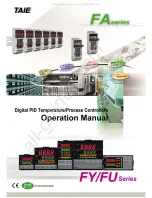
Manual
EKC 315A Industrial Evaporator Controller
14
USCO.PD.RD0.A1.22 / 521U0092
© Danfoss USCO (HMR_MKS), 04-2008
Appendix 1: Wiring diagram for discontinued TQ valve
Appendix 3
Wiring diagram for applications that use more than one AKV/A
pulse width modulating expansion valve in parallel to control
the refrigerant flow to a single evaporator. This strategy is used
in situations where the evaporator to be controlled exceeds the
capacity of a single expansion valve.
Remember to set parameter o09 in both the EKC 315A and the
EKC 347.
Appendix 4
If there are two evaporators sharing the same suction line, the
signal from the pressure transmitter can be used by up to two
controllers.
Appendices
These appendices are referenced in various parts of the text.
Appendix 2
The two types of superheat regulation, load-defined control and
adaptive control are shown below. For industrial refrigeration
applications, load-defined control should be tried first.
Load-defined superheat
The reference follows a defined curve. This curve is defined by
three values: the superheat value that will close the expansion
valve (parameter n22), the minimum superheat reference value
(parameter n10), and the maximum superheat reference value
(parameter n09). These three values must be selected in such
a way that the curve is situated between the minimum stable
superheat (MSS) curve and the curve for average temperature
difference
∆
Tm (temperature difference between media tem-
perature and evaporating temperature).
Adaptive superheat
Regulation is based on evaporator load by establishing mini-
mum stable superheat (MSS). The superheat reference is lowered
to the exact point where instability begins.
The superheat is limited by the settings for minimum and maxi-
mum superheat.


































